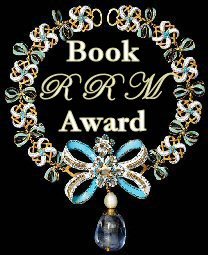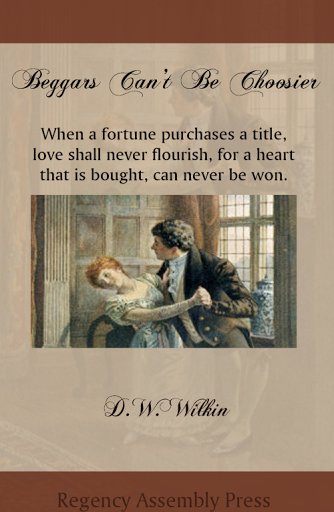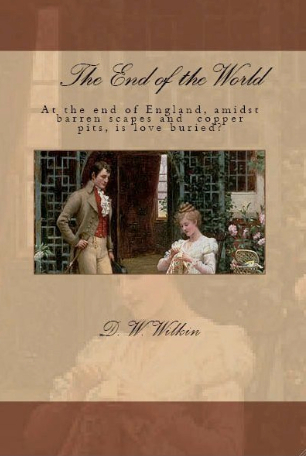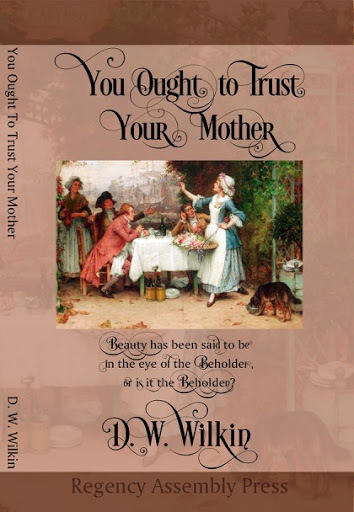D.W. Wilkin's Blog, page 46
June 19, 2016
RAP’s has Beggars Can’t Be Choosier
One of the our most recent Regency Romances.
Beggars has won the prestigious Romance Reviews Magazine Award for Outstanding Historical Romance:
It has also been nominated for the 2015 RONE Awards in the category of Historical:Post Medieval sponsored by InD’Tale Magazine.

It is available for sale and I hope that you will take the opportunity to order your copy.
For yourself or as a gift. It is now available in a variety of formats. For $3.99 you can get this Regency Romance for your eReader. A little more as an actual physical book.
When a fortune purchases a title, love shall never flourish, for a heart that is bought, can never be won.
The Earl of Aftlake has struggled since coming into his inheritance. Terrible decisions by his father has left him with an income of only 100 pounds a year. For a Peer, living on such a sum is near impossible. Into his life comes the charming and beautiful Katherine Chandler. She has a fortune her father made in the India trade.
Together, a title and a fortune can be a thing that can achieve great things for all of England. Together the two can start a family and restore the Aftlake fortunes. Together they form an alliance.
But a partnership of this nature is not one of love. And terms of the partnership will allow both to one day seek a love that they both deserve for all that they do. But will Brian Forbes Pangentier find the loves he desires or the love he deserves?
And Katherine, now Countess Aftlake, will she learn to appreciate the difference between happiness and wealth? Can love and the admiration of the TON combine or are the two mutually exclusive?
Purchase here:Amazon Kindle, Barnes and Noble Nook, Kobo, Smashwords, iBooks, & Trade Paperback
Feedback
If you have any commentary, thoughts, ideas about the book (especially if you buy it, read it and like it
June 18, 2016
Regency Personalities Series-Octavius Vernon Harcourt
Regency Personalities Series
In my attempts to provide us with the details of the Regency, today I continue with one of the many period notables.
Octavius Vernon Harcourt
5 December 1793 – 14 August 1863
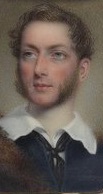
Octavius Vernon Harcourt
Octavius Vernon Harcourt was a British naval officer. He was the eighth son of Edward Venables-Vernon-Harcourt, Archbishop of York, and began life as Octavius Henry Cyril Vernon at Rose Castle, Cumberland. On 15 January 1831, succeeding to the properties of William Harcourt, 3rd Earl Harcourt, the father’s cousin, the family assumed the additional surname of Harcourt.
Harcourt entered the Royal Navy in August 1806 as a midshipman on board the 74-gun HMS Tigre, under the command of Captain Benjamin Hallowell, and in 1807 took part in the expedition to Egypt, witnessing the surrender of Alexandria, and was employed on boat-service on the Nile. During the blockade of Toulon, he took part the action of October 1809 which led to the destruction of the French ships Robuste and Lion. After Hallowell’s promotion to rear-admiral in August 1811, Harcourt followed him into HMS Malta. He served in Malta in the Mediterranean, co-operating with the troops on the south-east coast of Spain, and serving in the batteries at the siege of Tarragona in 1813. He was promoted to lieutenant on 11 January 1814 and joined the HMS Mulgrave under Captain Thomas James Maling. While off the coast of Italy, he landed with a party of seamen and marines near Piombino, captured a martello tower and brought out or destroyed a convoy which was anchored under its protection.
During the Hundred Days, Harcourt served aboard the frigate HMS Amelia, under Captain the Honourable Granville Proby, in the blockade of Elba, and when the news of the defeat of Napoleon at Waterloo arrived, was sent with a Major of the Tuscan army to summon the town of Porto Ferrajo to hear the announcement. Amelia was paid off in December 1816, and Harcourt remained on half-pay until February 1818 when he was appointed to the HMS Sir Francis Drake, the flagship of Sir Charles Hamilton, governor of Newfoundland. There, in February 1820, he was appointed commander of the sloop Drake, and also commanded the Carnation for a short time the same year. He then served in the West Indies, commanding Britomart from June 1824, and Primrose from May 1825, until finally returning to England in July 1827.
He was promoted to captain on 7 August 1827, and was selected by the Duke of Clarence, the Lord High Admiral, to act as his aide-de-camp aboard the royal yacht Royal Sovereign during an inspection tour to various naval ports. He received his last appointment in March 1834, commanding North Star, taking Hamilton Charles James Hamilton, the British Minister, to Buenos Aires, and then employed in surveying the coast of central America and the Californias, before finally returning home in October 1836.
On 26 October 1854 he was promoted to rear-admiral on half-pay, and on 10 June 1861 to vice-admiral on the retired list.
He was appointed High Sheriff of Yorkshire for 1849. He built at his own expense and endowed a church at Healey, near Masham in North Yorkshire, another church at Brent Tor, Devonshire, and restored the parish church of Masham. In 1858 he erected in Masham six almshouses which he endowed with £1,775 three per cent Consols.
Harcourt’s racehorse Ellington won the Epsom Derby in 1856.
He married, on 22 February 1838, Anne Holwell, second daughter of William Gater, and widow of William Danby of Swinton Park. She died on 26 June 1879, devising her Yorkshire estates to George, fifth son of Sir Robert Affleck, Bt.
He died at Swinton Park, Yorkshire, on 14 August 1863.


Conclusion of the Trolling Series-We’ll All Go A Trolling
We’ll All Go A Trolling Not only do I write Regency and Romance, but I also have delved into Fantasy.
The Trolling series is the story of a man, Humphrey. We meet him as he has left youth and become a man with a man’s responsibilities.
We follow him in a series of stories that encompass the stages of life. We see him when he starts his family, when he has older sons and the father son dynamic is tested.
We see him when his children begin to marry and have children, and at the end of his life when those he has loved, and those who were his friends proceed him over the threshold into death.
All this while he serves a kingdom troubled by monsters. Troubles that he and his friends will learn to deal with and rectify. It is now available in a variety of formats.
For $2.99 you can get this fantasy adventure.
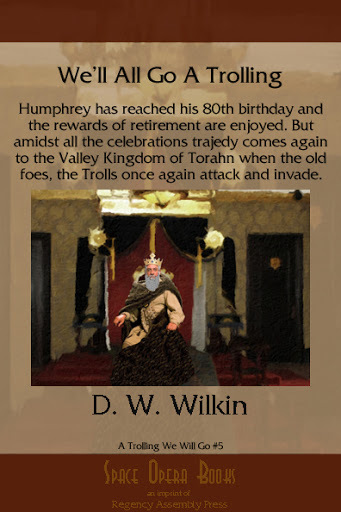
Barnes and Noble for your Nook
King Humphrey, retired, has his 80th birthday approaching. An event that he is not looking forward to.
A milestone, of course, but he has found traveling to Torc, the capital of the Valley Kingdom of Torahn, a trial. He enjoys his life in the country, far enough from the center of power where his son Daniel now is King and rules.
Peaceful days sitting on the porch. Reading, writing, passing the time with his guardsmen, his wife, and the visits of his grandson who has moved into a manor very near.
Why go to Torc where he was to be honored, but would certainly have a fight with his son, the current king. The two were just never going to see eye to eye, and Humphrey, at the age of 80, was no longer so concerned with all that happened to others.
He was waiting for his audience with the Gods where all his friends had preceded him. It would be his time soon enough.
Yet, the kingdom wanted him to attend the celebrations, and there were to be many. So many feasts and fireworks he could not keep track, but the most important came at the end, when word was brought that the Trolls were attacking once more.
Now Humphrey would sit as regent for his son, who went off to fight the ancient enemy. Humphrey had ruled the kingdom before, so it should not have been overwhelming, but at eighty, even the little things could prove troublesome.
Feedback
If you have any commentary, thoughts, ideas about the book (especially if you buy it, read it and like it
June 17, 2016
Regency Personalities Series-The Royal Asiatic Society of Great Britain and Ireland
Regency Personalities Series
In my attempts to provide us with the details of the Regency, today I continue with one of the many period notables.
The Royal Asiatic Society of Great Britain and Ireland
1823-Present
The Royal Asiatic Society of Great Britain and Ireland commonly known as the Royal Asiatic Society (RAS), was established, according to its Royal Charter of 11 August 1824, to further “the investigation of subjects connected with and for the encouragement of science, literature and the arts in relation to Asia.” From its incorporation the Society has been a forum, through lectures, its journal, and other publications, for scholarship relating to Asian culture and society of the highest level. It is the United Kingdom’s senior learned society in the field of Asian studies. Fellows of the Society are elected regularly. Fellows include highly accomplished and notable scholars of Asian Studies, and are entitled to use the honorific post-nominal letters FRAS.
The Society was founded in London in 1823, and received its Royal Charter from George IV the following year. The RAS was established by a group primarily composed of notable scholars and colonial administrators. The first president was Charles Watkin Williams-Wynn. It was intended to be the British counterpart to the Asiatic Society of Calcutta, which had been founded in 1784, by the noted Sanskrit scholar and jurist Sir William Jones. The leading figure in the foundation of the RAS was Henry Thomas Colebrooke, who was himself an important Sanskrit scholar, and one time President of the Asiatic Society of Calcutta.
When the Oriental Club of London was formed in 1824, membership of the RAS was stated as one of the four qualifications for membership of the new club.
Due to the nature of the Society’s close connection with the British Empire in the east, much of the work originating with the society has been focused on topics concerning the Indian subcontinent. However, the purview of the Society extends far beyond India: all of Asia and into Islamic North Africa, and Ethiopia are included. The Society does have a few limitations on its field on interest, such as recent political history and current affairs. This particular moratorium led to the founding of the Central Asian Society, which later became the Royal Society for Asian Affairs. After World War II, with the gradual end of British political hegemony ‘east of Suez’, the Society maintained its disinterested academic focus on Asia.
Throughout its history the Royal Asiatic Society of Great Britain and Ireland has, while only maintaining a very modestly sized membership, always contained a great deal of very distinguished individuals, from both the academic and political world.
This fund was initially established in 1828; and the results of its initial funding projects were soon forthcoming. The Fund became one of a large number of Victorian subscription printing clubs which published translations, re-issued historical works or commissioned original books which were too specialized for commercial publication.


RAP has The End of the World
The End of the World This is the first of the Regency Romances I published. It is available for sale and I hope that you will take the opportunity to order your copy.
For yourself or as a gift. It is now available in a variety of formats. And now at the reduced price of $3.99 you can get this Regency Romance for your eReader. A little more as an actual physical book.
Barnes and Noble for your Nook
Amazon for your Kindle and as a Trade Paperback
Hermione Merwyn leads a pleasant, quiet life with her father, in the farthest corner of England. All is as it should be, though change is sure to come. For she and her sister have reached the age of marriage, but that can be no great adventure when life at home has already been so bountiful.
When Samuel Lynchhammer arrives in Cornwall, having journeyed the width of the country, he is down to his last few quid and needs to find work for his keep. Spurned by the most successful mine owner in the county, Gavin Tadcaster, Samuel finds work for Gavin’s adversary, Sir Lawrence Merwyn.
Can working for Sir Lawrence, the father of two young women on the cusp of their first season to far away London, be what Samuel needs to help him resolve the reasons for his running away from his obligations in the east of the country?
Will the daughters be able to find happiness in the desolate landscapes and deadly mines of their home? When a stranger arrives in Cornwall while the war rages on the Peninsula, is he the answer to one’s prayers, or a nightmare wearing the disguise of a gentleman?
Feedback
If you have any commentary, thoughts, ideas about the book (especially if you buy it, read it and like it
June 16, 2016
Regency Personalities Series-David Murray 2nd Earl of Mansfield
Regency Personalities Series
In my attempts to provide us with the details of the Regency, today I continue with one of the many period notables.
David Murray 2nd Earl of Mansfield
9 October 1727 – 1 September 1796
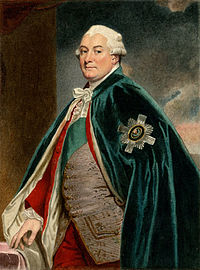
David Murray
David Murray 2nd Earl of Mansfield succeeded to both the Mansfield and Stormont lines of the Murray family, inheriting two titles and two fortunes.
Mansfield was the son of David Murray, 6th Viscount of Stormont, and his wife Anne Stewart. Lord Chief Justice William Murray, 1st Earl of Mansfield was his paternal uncle.
Mansfield was ambassador to Vienna and then to France in the early years of the American War of Independence, and played a role in sending news of American actions back to England. He had been elected a Scottish Representative Peer in 1754. He was appointed as the last Secretary of State for the Northern Department, serving from 1779 to 1782.
In 1783 he was appointed as Lord President of the Council, and again from 1794 to 1796. He served as Lord Justice General between 1778 and 1795. He was appointed a Privy Counsellor in 1763 and made a Knight of the Thistle in 1768.
Lord Mansfield married firstly Henrietta Frederica, daughter of Henry Graf Bunau, in 1759, whilst he was British ambassador to Saxony. They had one child, Lady Elizabeth Murray. Henrietta died in 1766.
A decade later, Mansfield married secondly the Honourable Louisa Cathcart, daughter of Charles Cathcart, 9th Lord Cathcart, in 1776. Louisa was his junior by more than 30 years, and they had five children – Caroline, David, George, Charles, and Henry.
In 1793 he succeeded his uncle Lord Mansfield as second Earl of Mansfield of the 1792 creation, while his wife succeeded as second Countess of Mansfield of the 1776 creation, according to special remainders in the letters patent. Lord Mansfield died in September 1796, aged 68. He was succeeded in his titles by his eldest son David. His second son, the Honourable George Murray, became a Lieutenant-General in the Army. His fourth son, the Honourable Sir Henry Murray, rose to the rank of General.
The Countess of Mansfield survived her husband by 47 years. She married the Honourable Robert Fulke Greville in 1797. She died in July 1843, aged 85.


You Ought to Trust Your Mother (YOTTYM) now released
Now available the next Regency Romance tale by D.W. Wilkin:
Beauty has been said to be in the eye of the Beholder, or is it the Beholden.
The tale of Baron Fallion Lancelot Stafford, a gentleman of perhaps too much leisure who has served in the wars of some few years before. He now has decided that all this leisure is perhaps a waste and he should be doing something. He was just very unsure what that was.
We also find Lady Beatrice Cavendish, the daughter of the Earl of Hoare who is famed for her beauty, yet cannot find any man who has more to speak to her beyond that one subject. And yet far too many think they should offer for her with only the ardent praise to her looks to recommend them. Perhaps there exists one suitor who could speak on a subject beyond that?
In the rush of the Season of 1821, where their most intimate friends have all come to the conclusion that they should marry, can Beatrice put aside her willful ways and hear sound thoughts that her mama has said on that particular subject? Beatrice was sure that her mother would be content if she accepted the Baron Tweedglen, or any of a dozen other men of good breeding, position, or wealth. Whether they had ought to speak on her attractiveness, and no other words would leave their mouths.
Certainly a marriage with such foundations was doomed to crumble once age advanced and liver spots or wrinkles appeared. Yet amongst the Ton, such marriages were often deemed successes. Would they be so for Beatrice, though? That was something she was destined to apply her own thoughts to.
For Baron Tweedglen, the haunting memory of the war caused him to avoid any reference to his time spent prosecuting that undertaking. Such deamons as consumed his psyche, were magnified as his desire was for a world that art flourished and certainly his experience had been the exact opposite of such an inclination. The Baron was desperately in need of something that could save him from his own self. Was there a remedy in marriage as the entire Ton seemed to believe?
Now available on Amazon for $15.99…
also available for your Kindle and Kindle Reading Apps for $3.99
for those who have iPads, Nooks, or other devices, the book is also available at:
The Apple iBookstore, Barnes and Noble Nook store, Kobo, and Smashwords for $3.99 as well.


June 15, 2016
Regency Personalities Series-Charles Gordon 10th Marquess of Huntly
Regency Personalities Series
In my attempts to provide us with the details of the Regency, today I continue with one of the many period notables.
Charles Gordon 10th Marquess of Huntly
4 January 1792 – 18 September 1863
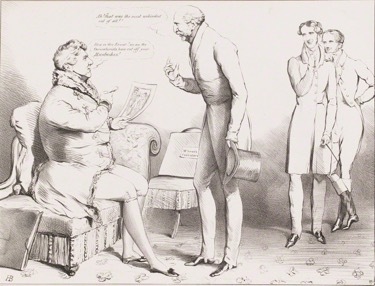
Charles Gordon (Seated)
Charles Gordon 10th Marquess of Huntly styled Lord Strathavon from 1794 to 1836 and Earl of Aboyne from 1836 to 1853, was a Scottish peer and first a Tory (1818–30) and then a Whig (1830 onwards) politician.
Huntly was the eldest son of the 5th Earl of Aboyne (later Marquess of Huntly) and his wife, Catherine. He was educated at St John’s College, Cambridge, and entered Parliament in 1818 as a Tory MP for East Grinstead before being elected as a Whig MP for Huntingdonshire in 1830. From 1826 to 1830, he was a Lord of the Bedchamber and then a Lord-in-Waiting from 1840 to 1841, his last office being that of Lord Lieutenant of Aberdeenshire from 1861 until his death.
On 20 March 1826, Lord Strathavon married Lady Elizabeth Conyngham (the eldest daughter of the 1st Marquess Conyngham). Elizabeth died in 1839 and the by-now Earl of Aboyne married Maria Antoinetta Pegus, a half-sister of George Frederick Albemarle Bertie, 10th Earl of Lindsey, on 10 April 1844; they had fourteen children:
Lord Charles Gordon, 11th Marquess of Huntly
Lord Lewis Gordon, lost at sea in HMS Captain (3 May 1848 – 7 September 1870)
Lord Bertrand Gordon (24 July 1850 – 10 August 1869)
Lt Col Lord Douglas William Cope Gordon MP (11 October 1851 – 4 August 1888)
Lord Esmé Stuart Gordon (12 March 1853 – 29 September 1900), married Elizabeth Anne Phippen Brown on 21 July 1874, and had issue
Lord Granville Armyne Gordon (14 June 1856 – 14 June 1907), married Charlotte D’Olier Roe (died 28 May 1900), on 4 September 1878, and had issue from whom descend the 12th and 13th Marquesses
Lord Randolph Seaton Gordon (17 May 1859 – 16 July 1859)
Lady Mary Katherine Gordon CBE (8 January 1845 – 8 September 1930), married Edmund Turnor, on 17 April 1866
Lady Evelyn Elizabeth Gordon (22 March 1846 – 16 March 1921), married Gilbert Heathcote-Drummond-Willoughby, 1st Earl of Ancaster, on 14 July 1863, and had issue
Lady Grace Cecilie Gordon CBE (15 October 1854 – 12 May 1941), married Hugh Lowther, 5th Earl of Lonsdale on 27 June 1878
Lady Margaret Ethel Gordon (5 February 1858 – 25 April 1950), married George Ormsby-Gore, 3rd Baron Harlech, 25 July 1881, and had issue
Lady Elena Mary Gordon (29 November 1861 – 19 January 1936), married Maj George Lamplugh Wickham, on 28 February 1885, and had issue
Lady Edith Blanche Gordon (29 November 1861 – 25 December 1862)
Lady Ethelreda Caroline Gordon (31 January 1864 – 9 May 1961)
Lord Aboyne inherited his father’s titles in 1853 and on his own death ten years later, they passed to his eldest son, Lord Charles.
Huntley played first-class cricket for Hampshire, Middlesex, Kent, Surrey and Marylebone Cricket Club in an amateur career which stretched from 1819 to 1843.
He also appeared for W Ward’s XI, the Players, the Gentlemen, the Married, Lord Strathavon’s XI (his own club) and the Gentlemen of Kent. In 33 matches he scored a total of 193 runs, with a highest score of 19 against Oxford University, at an average of 4.02.


Space Opera Books Presents Trolling, Trolling, Trolling Fly Hides
Trolling, Trolling, Trolling Fly Hides!
Not only do I write Regency and Romance, but I also have delved into Fantasy.
The Trolling series, (the first three are in print) is the story of a man, Humphrey. We meet him as he has left youth and become a man with a man’s responsibilities.
We follow him in a series of stories that encompass the stages of life. We see him when he starts his family, when he has older sons and the father son dynamic is tested.
We see him when his children begin to marry and have children, and at the end of his life when those he has loved, and those who were his friends proceed him over the threshold into death. All this while he serves a kingdom troubled by monsters.
Troubles that he and his friends will learn to deal with and rectify.
It is now available in a variety of formats. For $2.99 you can get this fantasy adventure.
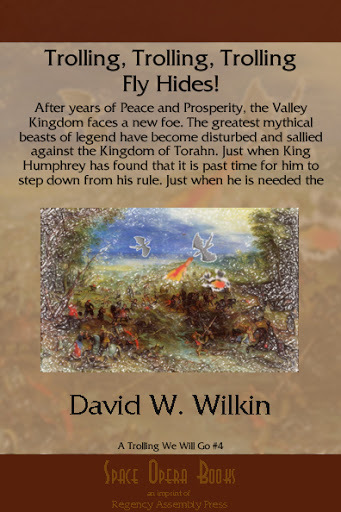
Barnes and Noble for your Nook
Old age is catching up to Humphrey and his friends. He feels it in his bones and with his son and heir having reached the prime of his life, it could very well be time to pass the baton of rule to Daniel.With the Valley Kingdom of Torahn at Peace, that would not be a terrible thing to do. Though breaking his decision to his wife Gwendolyn, the Queen, might be the hardest battle that he ever would fight.
Even as the life of retirement looks to be attractive and possible, however, the Valley Kingdom is beset again. Not Goblins, Trolls, Giants or Men, this time. No. That Humphrey knew would be far too easy.
Those obstacles had been overcome before and the problems they presented had solutions that the army of Torahn was trained to deal with. No, of all the creatures that came forth from Teantellen that they had beaten, the one they had never faced now came forth. Dragons!
Who in the realm knew how to fight these mythical beasts? Was there even away to do so?
Now Humphrey who had thought to spend the remainder of his days quietly writing his memoirs and drinking, was faced with the greatest challenge he had ever known.
Feedback
If you have any commentary, thoughts, ideas about the book (especially if you buy it, read it and like it
June 14, 2016
Regency Personalities Series-John Varley
Regency Personalities Series
In my attempts to provide us with the details of the Regency, today I continue with one of the many period notables.
John Varley
17 August 1778 – 17 November 1842
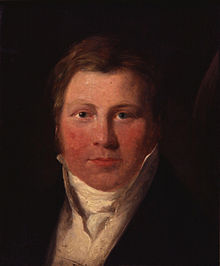
John Varley
John Varley was born at the Old Blue Post Tavern, Hackney, on 17 August 1778. His father, Richard Varley, born at Epworth in Lincolnshire, had settled in London after the death of his first wife in Yorkshire. For a brief time John Varley was employed by a portrait painter in Holborn and then, at the age of 15 or 16, he became a pupil of Joseph Charles Barrow (fl. 1789–1802) who had an evening drawing school twice a week at 12 Furnival’s Inn Court, Holborn. It was Barrow who took Varley on a sketching tour to Peterborough from which he emerged as a professional painter. In 1798 he exhibited a highly regarded sketch of Peterborough Cathedral at the Royal Academy and became a regular exhibitor at the RA until the foundation of the Old Watercolour Society in 1805.
As one of the founders of the OWS Varley exhibited largely there, over 700 drawings. He also became a highly successful drawing master with pupils including Copley Fielding, David Cox, John Linnell and William Turner (artist) of Oxford. Despite his success he was constantly in financial difficulties, “since he was both a hopeless businessman and by temperament something of a Micawber”. (Mallalieu). Varley was particularly skilled at the laying of flat washes of watercolour which suited the placid, contemplative mood that he often sought to evoke.
Varley published A Treatise on the Principles of Landscape Drawing, 1816–21 and A Practical Treatise on the Art of Drawing in Perspective. He also wrote an astrological text (with illustrations) entitled A Treatise on Zodiacal Physiognomy in 1828.
He was a friend of William Blake with whom he collaborated in 1819–1820 on the book Visionary Heads, written by Varley and illustrated by Blake.
He is buried at Kensal Green Cemetery.
A Treatise on the Principles of Landscape Drawing…
A Practical Tratise on the Art of Drawing in Perspective: adapted for the study of those who draw from nature; by which the usual errors can be avoided (printed for Sherwood, Gilbert, and Piper,…and R.Ackermann, …, London ?1815/1820?).
A Treatise on Zodiacal Physiognomy, illustrated by engravings of heads and features, and accompanied by tables of the time of rising of the twelve signs of the zodiac; and containing also new and astrological explanations of some remarkable portions of ancient mythological history (published for the author, 10½, Great Tichfield Street, London 1928; sold by Longman) IV, 60pp.: 6 Plates, (8vo), 25 cm; plates engraved by J.Linnell.



